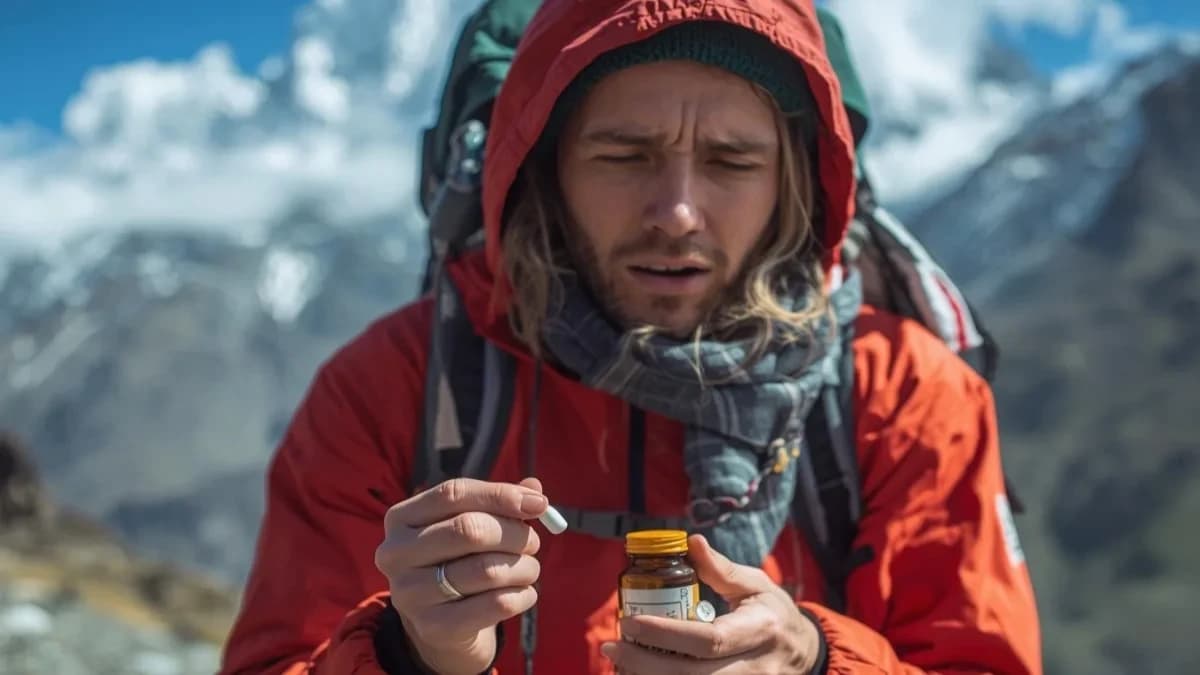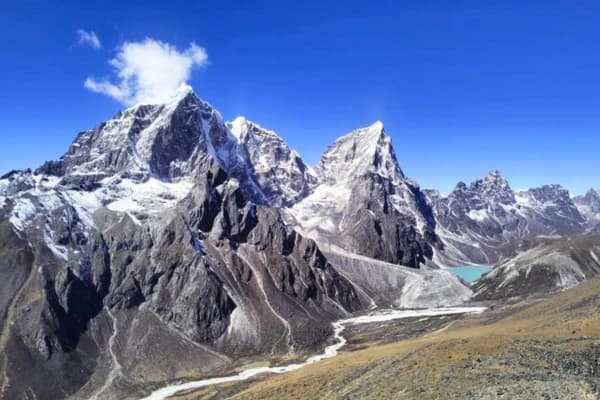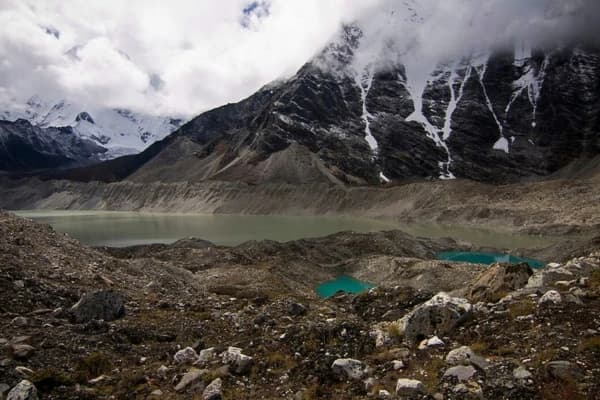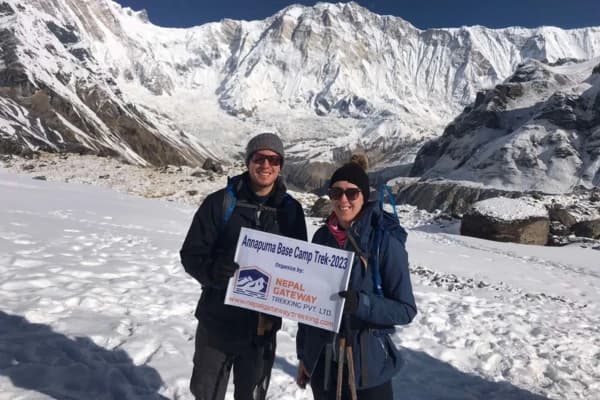You’ve spent months preparing, packed your backpack with care, and mapped out your route through Nepal’s majestic trails. Yet, an important question remains: should you take Diamox for high altitude trek?
Diamox is not essential for every trekker, but it can be a valuable preventive measure for those at risk of altitude sickness. Whether you choose to take it depends on your health, trekking experience, and itinerary.
Acute mountain sickness (AMS) is a serious risk for trekkers on well-known high-altitude routes including Langtang Valley, Annapurna Circuit, and Everest Base Camp. Unexpected symptoms like headaches, nausea, dizziness, and exhaustion might interfere with your journey and, if left untreated, endanger your health.
Some trekkers take Diamox to avoid getting altitude sickness, especially if they are going up quickly, have had AMS before, or are on a tight plan with few days to get used to the altitude. Others rely on natural acclimatization, which enables their bodies to gradually adapt through rest, hydration, and steady climb.
In the end, your own risk factors, trekking speed, and medical advice should all be taken into consideration while deciding whether to carry Diamox. When used properly, it can make your high-altitude trekking safer and more pleasurable. However, it is supportive and should not be used in place of adequate preparation and acclimatization.
What is Diamox and How Does It Work?
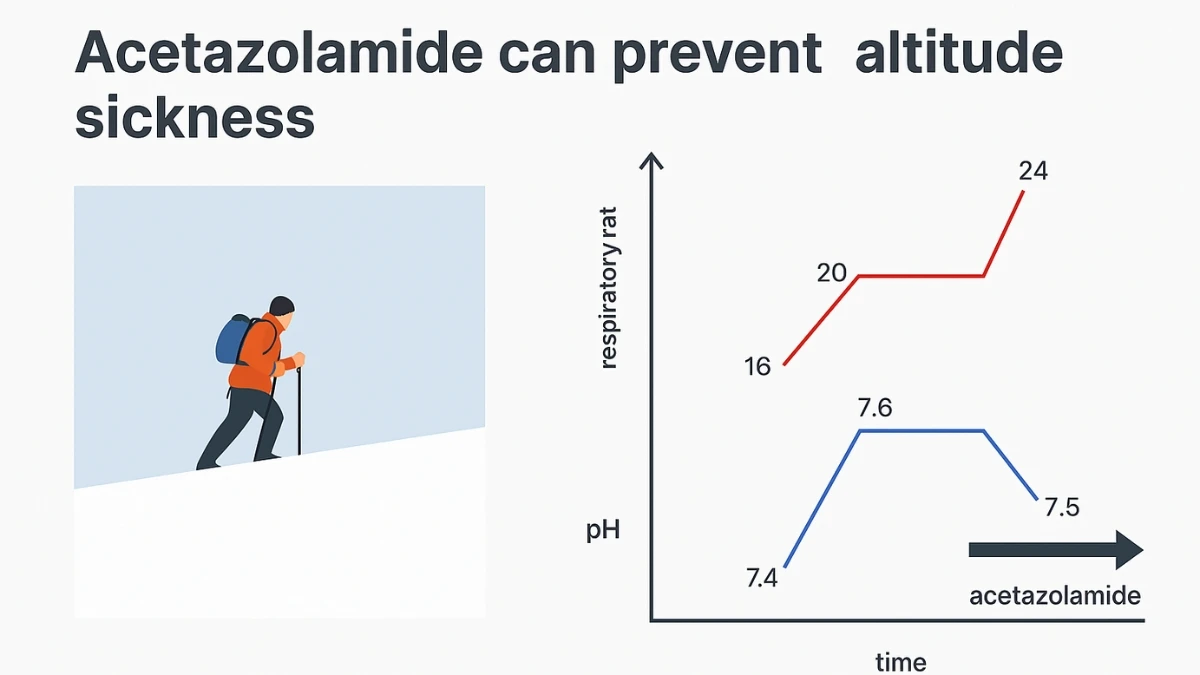
Diamox (Acetazolamide) is a prescription medication originally developed to treat glaucoma and epilepsy. Today, it is commonly used to prevent acute mountain sickness (AMS) in trekkers and mountaineers.
When you ascend to high altitudes, the air pressure drops, leading to lower oxygen levels. Your body reacts by breathing faster and increasing heart rate. Diamox helps this process by slightly acidifying your blood, which naturally triggers deeper and more frequent breathing. This speeds up oxygen absorption and helps your body adjust to higher altitudes more efficiently.
How Diamox Helps in High Altitude Trek?
- Speeds up acclimatization: Diamox does not cure AMS but supports your body in adjusting faster.
- Improves oxygenation: By increasing breathing rate, more oxygen reaches your tissues.
- Reduces early AMS symptoms: Headache, mild nausea, and fatigue can be less pronounced if Diamox is taken preventively.
It’s important to note that Diamox is not a substitute for proper trekking preparation. Physical fitness, gradual ascent, hydration, and nutrition remain the foundation of safe high-altitude trekking.
When Should Trekkers Usually Consider Taking Diamox?
Trekkers should consider taking Diamox for high altitude trek if they are at higher risk of developing altitude sickness due to their pace, health, or previous experiences.
Certain conditions make Diamox more relevant:
- Rapid ascents: If your itinerary involves quick elevation gains without adequate rest, your body may not have enough time to acclimatize naturally. Diamox can help reduce the risk of AMS in such scenarios.
- Previous AMS experience: Individuals who have experienced altitude sickness on earlier treks are more likely to benefit from preventive Diamox use. It can help mitigate symptoms and allow a safer, more comfortable trekking experience.
- High-altitude treks: For treks above 3,000 meters, like Everest Base Camp, Annapurna Circuit, or Manaslu Circuit, the risk of AMS increases. Trekkers in this range may consider Diamox as a precaution, especially if they have tight schedules with limited acclimatization days.
While Diamox can be helpful, it should always be taken under medical guidance. Preventive use is generally more effective than starting the medication only after symptoms appear.
Preventive vs Reactive Use of Diamox for Altitude Sickness
- Preventive use: Taking Diamox for high altitude trek 1–2 days before reaching elevated altitudes allows your body to acclimatize more efficiently. This approach helps to reduce the severity of AMS symptoms, making your trek safer and more comfortable.
- Reactive use: Starting Diamox only after experiencing altitude sickness symptoms may provide some relief, but it is generally less effective than preventive use.
Medical guidance is essential. To guarantee safety, a qualified healthcare specialist should always establish the proper dosage and timing of Diamox, particularly if you have other medical concerns.
Diamox Dosage and Timing: How and When to Take It?
For trekkers planning a high-altitude adventure, understanding the correct Diamox dosage for trekking and timing is very important. Taking the medication at the right dose and at the right time can help prevent acute mountain sickness (AMS) and make your trek safer and more comfortable.
The typical preventive dosage is 125–250 mg twice daily, but this can vary depending on your health, altitude plan, and doctor’s advice. Self-medicating or taking the wrong dose can reduce effectiveness and increase the risk of side effects.
When to Start Diamox?
- Preventive use: Start 1–2 days before reaching altitudes of 2,500–3,000 meters. This allows your body to adjust gradually and reduces the likelihood of developing AMS.
- During the trek: Continue taking Diamox for the first few days at high altitude, or until your body has acclimatised or you begin descending.
Starting Diamox too late, after symptoms have already appeared, is generally less effective than preventive use.
Important Tips for Safe Use
- Take with food: This helps minimize stomach irritation.
- Stay well hydrated: Diamox acts as a mild diuretic, so drink plenty of water throughout the day.
- Avoid alcohol and excessive caffeine: Both can increase dehydration and reduce the effectiveness of Diamox.
- Follow medical guidance: Dosage and duration should always be prescribed by a qualified healthcare professional. Self-medicating can be risky, especially for first-time trekkers or those with existing medical conditions.
In summary, optimizing the advantages of Diamox while reducing any adverse effects requires careful timing, dosage, and hydration. It can be a useful tool to prevent AMS and enhance the safety and enjoyment of your high-altitude hike when used appropriately.
Common Diamox Side Effects and Risks
While Diamox is generally safe for most healthy trekkers, it may cause some side effects, ranging from mild to rare but serious.
Common mild side effects include:
- Tingling or numbness in fingers, toes, or lips
- Increased urination
- Mild nausea or dizziness
- Change in taste or loss of appetite
Rare but serious reactions may occur, especially in individuals with sulfa allergies. These can include:
- Skin rash or itching
- Electrolyte imbalance
- Severe fatigue or weakness
If any serious side effects occur, stop taking Diamox immediately and seek medical attention. This is why medical supervision is essential when using this medication.
Natural Acclimatization vs Diamox: Which is Better?
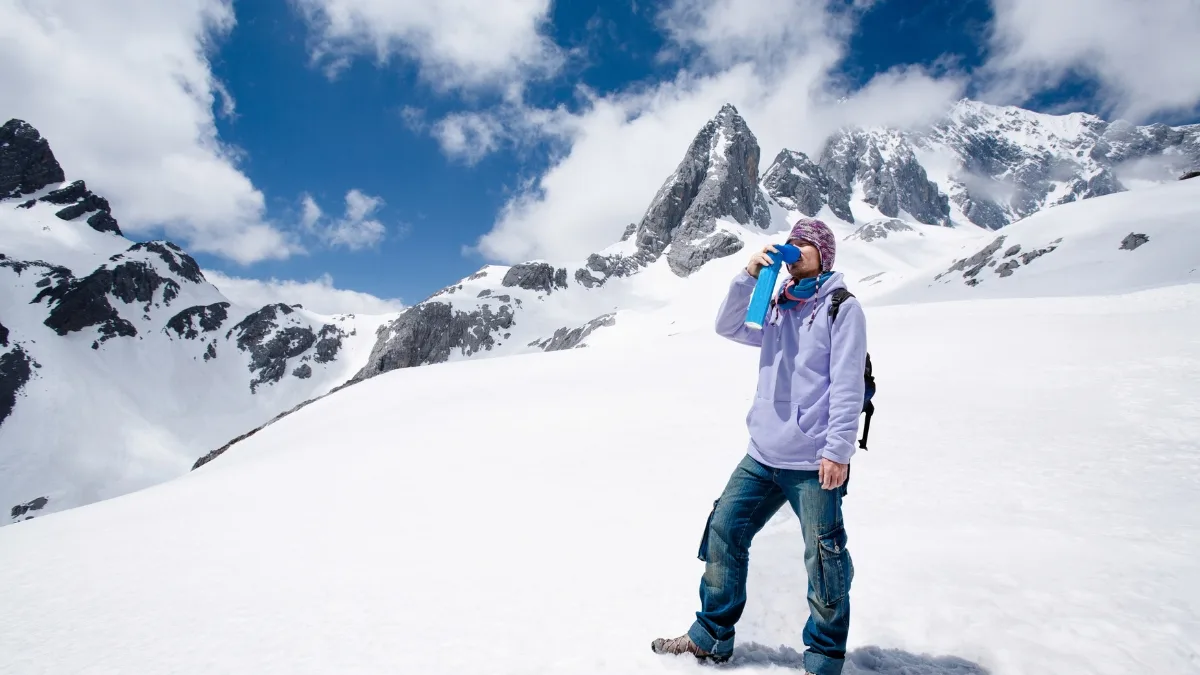
Many trekkers wonder if medication is necessary at all. The truth is, natural acclimatization is often the most effective way to prevent AMS, especially for first-time or fit trekkers.
Natural Acclimatization
- Ascend gradually, limiting elevation gain to 500 meters per day above 3,000 meters.
- Take rest days at key points in your itinerary.
- Drink plenty of water and eat balanced meals rich in carbohydrates.
- Avoid alcohol and overexertion during the first days at high altitude.
Using Diamox
- Diamox speeds up the process of acclimating to high altitudes.
- Trekkers with busy schedules or prior AMS experience will find this useful.
- Can lessen early symptoms, making trekking at higher elevations easier.
|
Aspect |
Natural Acclimatization |
Diamox |
|
Adjustment Speed |
Gradual |
Faster |
|
Side Effects |
None |
Mild reactions possible |
|
Long-term Benefit |
Strong adaptation |
Temporary aid |
|
Best For |
All trekkers |
Tight schedules / prior AMS history |
Summary: Diamox should complement, not replace, proper acclimatization. Relying solely on medication is not a safe strategy.
Do You Really Need Diamox for High Altitude Trek?
Not every trekker needs to take Diamox for high altitude trek, but it can be beneficial in certain situations depending on your health, trekking experience, and itinerary.
- Experienced trekkers: Those who are physically fit, follow a well-paced itinerary, and include sufficient acclimatization days often do not require Diamox. Gradual ascent, hydration, and proper rest are usually enough to prevent acute mountain sickness (AMS).
- Beginners or high-risk trekkers: Individuals with little high-altitude experience, tight schedules, or a history of AMS may benefit from preventive Diamox use. It can help reduce early symptoms like headaches, nausea, and fatigue, making the trek safer and more enjoyable.
It's important to remember that everyone responds to high altitudes in a different way. While Diamox is a helpful, not all trekkers need it. The best approaches to avoid AMS are still to pay attention to your body, pace yourself, drink enough of water, and use the proper acclimatization techniques.
Safe Trekking Practices to Minimize AMS Risk
Even if you intend to carry Diamox on a high-altitude climb, adhering to proper trekking techniques is critical to avoiding acute mountain sickness (AMS) and having a pleasant experience.
- Ascend gradually: Limit daily elevation gain above 3,000 meters to give your body time to adjust. A slow and steady ascent is the most reliable way to prevent AMS.
- Plan rest days: Include rest days at strategic altitudes along your trekking route to allow proper acclimatization.
- Stay hydrated: Make sure to drink at least 3 to 4 liters of water each day. Staying properly hydrated helps your body cope with the lower oxygen levels at high altitude and reduces the risk of AMS.
- Eat a balanced diet: Prioritize meals rich in carbohydrates to keep your energy up. Avoid alcohol and limit caffeine, as they can dehydrate you and make altitude sickness worse.
- Recognize AMS symptoms: Pay attention to early signs like headache, nausea, dizziness, or fatigue. Catching these symptoms early allows you to take action quickly and prevent them from worsening.
Remember, Diamox should be considered a backup measure, not a replacement for proper preparation. Gradual ascent, awareness of your body, adequate rest, and hydration are the foundations of safe and successful high-altitude trekking.
When to Seek Medical Help During Trekking?
Even with preventive measures like Diamox for high altitude trek, it’s essential to know when to seek medical help. Early action can save lives and avoid major consequences.
Seek medical attention right away if you have:
- Persistent or severe AMS symptoms: Chronic headache, nausea, or vomiting that does not improve with rest and drinking.
- Neurological or respiratory issues: Confusion, shortness of breath, difficulty walking, or loss of coordination.
- Signs of serious altitude illnesses: Symptoms of HAPE (High-Altitude Pulmonary Edema), such as extreme shortness of breath and coughing, or HACE (High-Altitude Cerebral Edema), including severe headache, confusion, and impaired balance.
In severe cases, descent and evacuation are the safest actions. Ignoring these warning signs can rapidly escalate into life-threatening emergencies. Always put your health over achieving the next altitude milestone.
Final Thoughts
Diamox for high altitude treks can be useful for some trekkers because it promotes speedier acclimatization and reduces early AMS symptoms. However, it is not necessary for everyone. The fundamentals of safe and successful high-altitude trekking remain the same: a moderate ascent, staying adequately hydrated, getting enough rest, eating a balanced food, and paying close attention to your body's signals.
While Diamox can provide extra support, it should never replace preparation, awareness, and patience. Listening to your body and planning your trek carefully are ultimately the most effective ways to prevent altitude sickness and enjoy your Himalayan adventure safely.
Frequently Asked Questions (FAQs)
Is it safe to take Diamox before a high-altitude trek?
Yes, Diamox for high altitude trek is generally safe if prescribed by a doctor. Starting 1–2 days before reaching higher altitudes can help prevent AMS symptoms like headache, nausea, and dizziness. Always take the medication as prescribed by your doctor.
Can I prevent AMS naturally without Diamox?
Yes. Many trekkers avoid acute mountain sickness by gradually ascending, staying hydrated, getting enough rest, and eating a well-balanced meal. Diamox is a helpful choice, but acclimatization, pace, and listening to your body are still the most effective techniques.
What are the common side effects of Diamox?
Common mild side effects include tingling in fingers or toes, increased urination, mild nausea, or taste changes. Serious responses are rare but may occur in individuals with sulfa allergies or kidney difficulties. Medical supervision is essential.
How long should I take Diamox during the trek?
Diamox is usually taken for 2–5 days, starting before high-altitude exposure and continuing until your body adjusts or you begin descending. Always follow your doctor’s guidance for duration and dosage.
Should I carry Diamox on every Himalayan trek?
Diamox should be carried as a backup, especially on hikes above 3,000 meters, quick ascents, or for trekkers with a history of AMS. It should supplement, not replace, effective acclimatization techniques.
Can Diamox completely prevent altitude sickness?
No, Diamox cannot completely prevent AMS, but it helps reduce the severity of symptoms and supports faster acclimatization. Proper trekking practices, gradual ascent, and rest days are still essential.
Can beginners take Diamox safely?
Yes, beginners can take Diamox under physician supervision, especially if they plan a rapid ascent or have little time to acclimate. However, relying only on medication rather than proper trekking procedures is not encouraged.
What should I do if I experience AMS symptoms despite taking Diamox?
If AMS symptoms persist, such as severe headache, nausea, vomiting, confusion, or shortness of breath, stop ascending immediately and seek medical help. Descent is often the safest and most effective treatment for serious cases.
Are there alternatives to Diamox for AMS prevention?
Yes, natural alternatives include gradual ascent, rest days, hydration, carbohydrate-rich meals, and avoiding alcohol or overexertion. Some trekkers also use supplemental oxygen for emergency situations, but medication should always be guided by a doctor.
